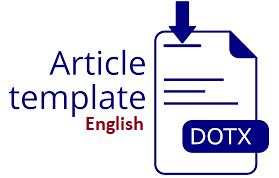E-Commerce Produk Hasil Pertanian Berbasis Web dengan Metode Agile Software Development
DOI:
https://doi.org/10.30865/klik.v3i6.911Keywords:
E-Commerce; Website; PHP; XAMPP; Agile Software DevelopmentAbstract
As we know, today's website has become a necessary development for an organization, agency, commercial company, and so on. Web-based applications are applications that can be accessed via a web browser when connected to the internet or intranet network. This application is also software or software that uses programming languages ??such as PHP, CSS and other programming languages. The website is considered effective as an alternative media for marketing as well as providing information to the public, in addition to this online sales and ordering information system, it is expected to improve service to consumers. In this research, an E-Commerce/Online Shop will be developed, the online shop itself is an application for purchasing goods and services through the Internet. Through shopping via the Internet, a buyer can see in advance the goods and services he wants to spend through the web, which is facilitated by the seller. In this webside research I use xampp, with the PHP programming language and use the Agile Software Development method, this method is an approach to systematic and sequential software development that starts at the level and progress of the system throughout Planning, Design, Analysis, Implementation, Testing, Reviews, Releases and applications will be used for farmers for future business
Downloads
References
T. Safiranita, A. M. Ramli, D. Olivia, F. Gunawan C., and E. Ramadayanti, “The Role of E-Commerce in Escalation of Digital Economy in The New Normal Era Based on Law Number 27 of 2022 Concerning Personal Data Protection,” Jurnal Penelitian Hukum De Jure, vol. 22, no. 4, p. 437, Dec. 2022, doi: 10.30641/dejure.2022.v22.437-450.
A. Wantoro and K. Muludi, “KOMBINASI METODE ANALITICAL HIERARCHY PROCESS (AHP) DAN SIMPLE ADDTIVE WEIGHT (SAW) UNTUK MENENTUKAN WEBSITE E-COMMERCE TERBAIK,” Jurnal Sistem Informasi, vol. 9, no. 1, pp. 131–142, 2020, [Online]. Available: www.webpagetest.org
E. Puspita Sari, E. Pudjiarti, U. Bina Insan Lubuklinggau, and H. Susanti, “Jurnal Teknologi Informasi Mura SISTEM INFORMASI PENJUALAN PAKAIAN WANITA BERBASIS WEB (E-COMMERCE) PADA PT. BUNITOP INDONESIA.”
V. B. Gulo, A. Triayudi, and A. Iskandar, “Sistem Informasi Aplikasi Pemesanan Makanan Restoran Berbasis Web Menggunakan Metode Agile Development,” Jurnal Riset Komputer), vol. 10, no. 1, pp. 2407–389, 2023, doi: 10.30865/jurikom.v10i1.5633.
R. Santoso, “REVIEW OF DIGITAL MARKETING & BUSINESS SUSTAINABILITY OF E-COMMERCE DURING PANDEMIC COVID-19 IN INDONESIA,” Jurnal Ilmu Ekonomi Terapan), vol. 5, no. 2, pp. 95–106, 2020, doi: 10.20473/jiet.v5i2.23614.
H. Jundrio and K. Keni, “PENGARUH WEBSITE QUALITY, WEBSITE REPUTATION DAN PERCEIVED RISK TERHADAP PURCHASE INTENTION PADA PERUSAHAHAAN E-COMMERCE,” Jurnal Muara Ilmu Ekonomi dan Bisnis, vol. 4, no. 2, p. 229, Jun. 2020, doi: 10.24912/jmieb.v4i2.7802.
T. Safiranita, A. M. Ramli, D. Olivia, F. Gunawan C., and E. Ramadayanti, “The Role of E-Commerce in Escalation of Digital Economy in The New Normal Era Based on Law Number 27 of 2022 Concerning Personal Data Protection,” Jurnal Penelitian Hukum De Jure, vol. 22, no. 4, p. 437, Dec. 2022, doi: 10.30641/dejure.2022.v22.437-450.
I. Rabbani, E. Krisnanik, and S. Kom, E-COMMERCE PERLENGKAPAN HAJI DAN UMROH BERBASIS WEB MENGGUNAKAN METODE AGILE SOFTWARE DEVELOPMENT. 2020.
M. N. Winnarto et al., “Penerapan Framework Codeigniter Pada Pengembangan Website E-Commerce Batik Tulis HR Ambar,” Diterima Januari, vol. 9, no. 1, p. 2021, 2021.
Y. Apridiansyah and A. Wijaya, “APLIKASI E-COMMERCE HASIL LAUT BENGKULU DENGAN PENERAPAN ALGORITMA SEO MENGGUNAKAN MODEL SEMATIK WEB,” 2019. [Online]. Available: https://jurnal.ikhafi.or.id/index.php/jusibi/194
D. Alif Firmansyah, B. Nugroho, and F. Prima Aditiawan, “PENERAPAN METODE WATERFALL PADA SISTEM INFORMASI E-COMMERCE DEFIRZA COLLECTION,” 2020.
B. Bayu Aji Salim and L. Li Hin, “IMPLEMENTASI WEBSITE E-COMMERCE PADA TOKO ONLINE BERLITAID MENGGUNAKAN METODE SEO DAN BUSINESS MODEL CANVASS.”
J. Pendidikan Tambusai, K. Berbasis Web, S. Kasus, B. Kebaya dan Rok Batik di Koto Tangah Simalanggang, N. Prima, and A. Hadi, “Rancang Bangun Sistem Informasi E-Commerce di UKM Aneka”.
G. Melisa and I. Anastasia Sitanggang, “PERANCANGAN WEBSITE E-COMMERCE INEED.ID,” 2022.
L. Triyana Hidayah and I. Gamayanto, “PERANCANGAN WEBSITE E-COMMERCE PADA UD. TIGA BAROKAH.”
L. Quranniati, “PERANCANGAN DAN PEMBUATAN WEBSITE E-COMMERCE UNTUK SISTEM PENJUALAN PADA TOKO BEZAIN.”
M. Susilo and R. Kurniati, “RANCANG BANGUN WEBSITE TOKO ONLINE MENGGUNAKAN METODE WATERFALL,” 2018.
J. F. Sosialisasi et al., “Sosialisasi dan Penyuluhan Strategi Pemasaran Digital Pada UMKM Baby Smart Bubur Bayi Berbasis E-Commerce”.
B. Harto, T. Sumarni, A. Dwijayanti, R. Komalasari, S. Widyawati, and P. Lp3i Bandung1, “Transformasi Bisnis UMKM Sanfresh Melalui Digitalisasi Bisnis Pasca Covid 19.” [Online]. Available: https://journals.upi-yai.ac.id/index.php/IKRAITH-ABDIMAS/issue/archive
K. L. Siemienski, J. C. Trabulsi, University of Delaware, and University of Delaware. Department of Behavioral Health and Nutrition., Breastfeeding and growth in infants with congenital heart disease.
Bila bermanfaat silahkan share artikel ini
Berikan Komentar Anda terhadap artikel E-Commerce Produk Hasil Pertanian Berbasis Web dengan Metode Agile Software Development
ARTICLE HISTORY
Issue
Section
Copyright (c) 2023 Aldya Bagas Prahastyo, Agung Triayudi, Ben Rahman

This work is licensed under a Creative Commons Attribution 4.0 International License.
Authors who publish with this journal agree to the following terms:
- Authors retain copyright and grant the journal right of first publication with the work simultaneously licensed under Creative Commons Attribution 4.0 International License that allows others to share the work with an acknowledgment of the work's authorship and initial publication in this journal.
- Authors are able to enter into separate, additional contractual arrangements for the non-exclusive distribution of the journal's published version of the work (e.g., post it to an institutional repository or publish it in a book), with an acknowledgment of its initial publication in this journal.
- Authors are permitted and encouraged to post their work online (e.g., in institutional repositories or on their website) prior to and during the submission process, as it can lead to productive exchanges, as well as earlier and greater citation of published work (Refer to The Effect of Open Access).
















